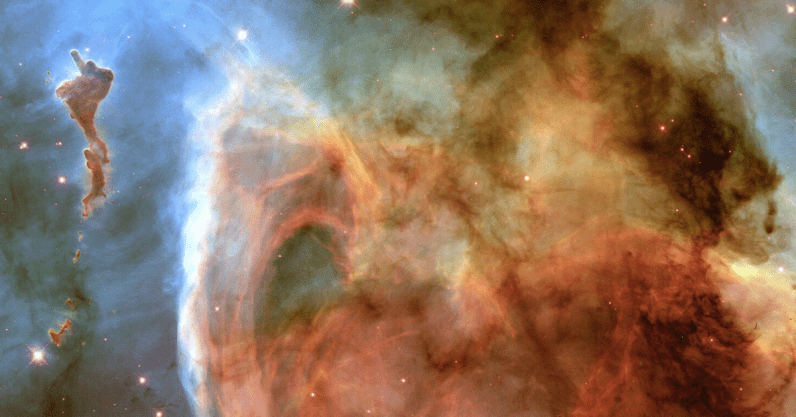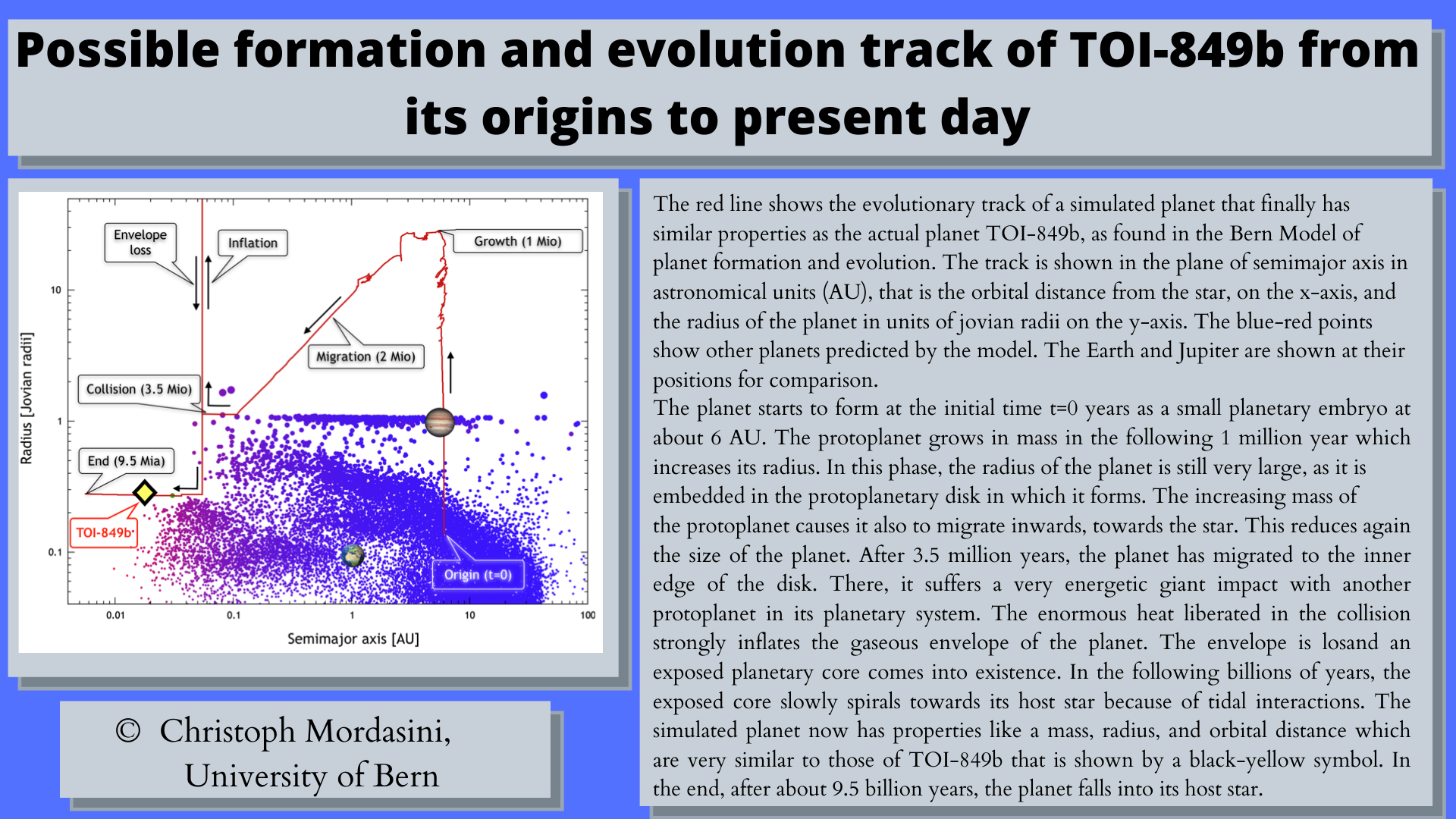Did TOI 849 b lose its outer layers?
One possible explanation of the missing outer layers of TOI 849 b is that it was somehow stripped violently from the planet.
“There are several possibilities explaining how TOI 849 b became this exposed core which can be split into two categories,” Mordasini explains. “The planet had once a much more massive envelope of H/He, but it somehow lost it. Or The planet never had a lot of H/He.”
The stripping of the outer layers of TOI 849 b transforming it from a gas giant to an exposed planetary core can be further divided down into two distinct sub-scenarios. “Firstly, perhaps during the formation phase, the orbit of the planet could have been very eccentric. When it got circularised via a tidal interaction with the host stat, the energy was injected into the planet, leading to the ejection of some or all of the gaseous envelope,” says Mordasini. “Alternatively, the gaseous envelope could have been ejected because of a giant impact or collision with another protoplanet also originally present in the system of TOI 849 b.”
It was this latter scenario that Mordasini investigated for the Nature paper building upon a model of planetary evolution synonymous with the University of Bern. The researcher and his collaborator and co-author, Alexandre Emsenhuber, a postdoctoral research associate at the University of Arizona, scoured a large data set of possible planet formation and evolution models to see if any simulated planets possessed properties similar to those of TOI 849 b.
“We were surprised to see, that indeed, yes, the simulations did contain planets similar to TOI-849b, but only in a very low frequency,” Mordasini explains. “We checked how these planets came into existence. We found that these planets had first accreted a large amount of H/He, as we would expect it normally, but then they collided with another protoplanet.”
This collision releases kinetic energy into the gaseous envelope of the unfortunate target planet, causing it to heat and expand and resulting in it ultimately becoming unbound from the planet’s core.
“We knew that such a mechanism is possible in the models, but to see it realized in reality, at least potentially, was fascinating,” Mordasini adds. “A crucial aspect is here that the impact need to happen after the gaseous disc has dissipated. Otherwise, the core would re-start accreting gas from the disc, leading to a ‘normal’ giant planet. So timing is critical.”
But what about that alternative family of explanations; those that posit that TOI 49 b never had an outer layer of hydrogen or helium to begin with?
Was TOI 849 b born without outer layers?
Of course, just because this is the model that Mordasini worked on for the study, doesn’t mean that he has closed his mind to other possible explanations.
“A possible explanation could be that the planet carved a gap around its orbit into the gaseous disk, suppressing gas accretion,” the researcher says. “This is a bit counterintuitive, but the gravitational interaction of the protoplanet and the surrounding disc can under certain circumstances lead to a depletion of gas in the vicinity of the planet — as opposed to gravitational attraction leading to a pile-up of gas in the vicinity of the planet, as one may expect. The factor changing this is that the planet is in a close orbit around its host star.”
Even with the increasing power of telescopes and advances such as the James Webb space telescope, set to launch in 2021, and the ESO’s Extremely Large Space Telescope being built in the Chilean desert, opportunities to study an object like TOI 849 b will likely remain few and far between.
“We already know that such objects are very rare, as otherwise, we would have detected many more of them,” Mordasini continues. “TOI-849b lies in terms of orbital distance, mass and radius in the so-called Neptunian desert. This is a part of space which is almost devoid of planets — very close planets with periods of less than a few days are either lower-mass super-Earth planets, or massive giant planets, but not something intermediate like TOI-849b.”
This means that to obtain the kind of information that direct study of a planet’s core offers, TOI-849b may remain astronomers’ only viable option. Mordasini explains that the next steps for his team are to study observationally the atmospheric composition of the planet, to find what materials the core is made of. They will then further investigate the different proposed pathways more closely, to if certain scenarios of the outer layer loss can be discounted.
“It is a very strange planet,” the Unviersity of Bern researcher concludes. “Usually, the cores of giant planets are not accessible to direct observations, but with TOI-849b we can look into a planet, at its core, so to say!”

